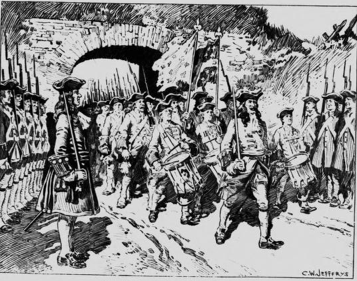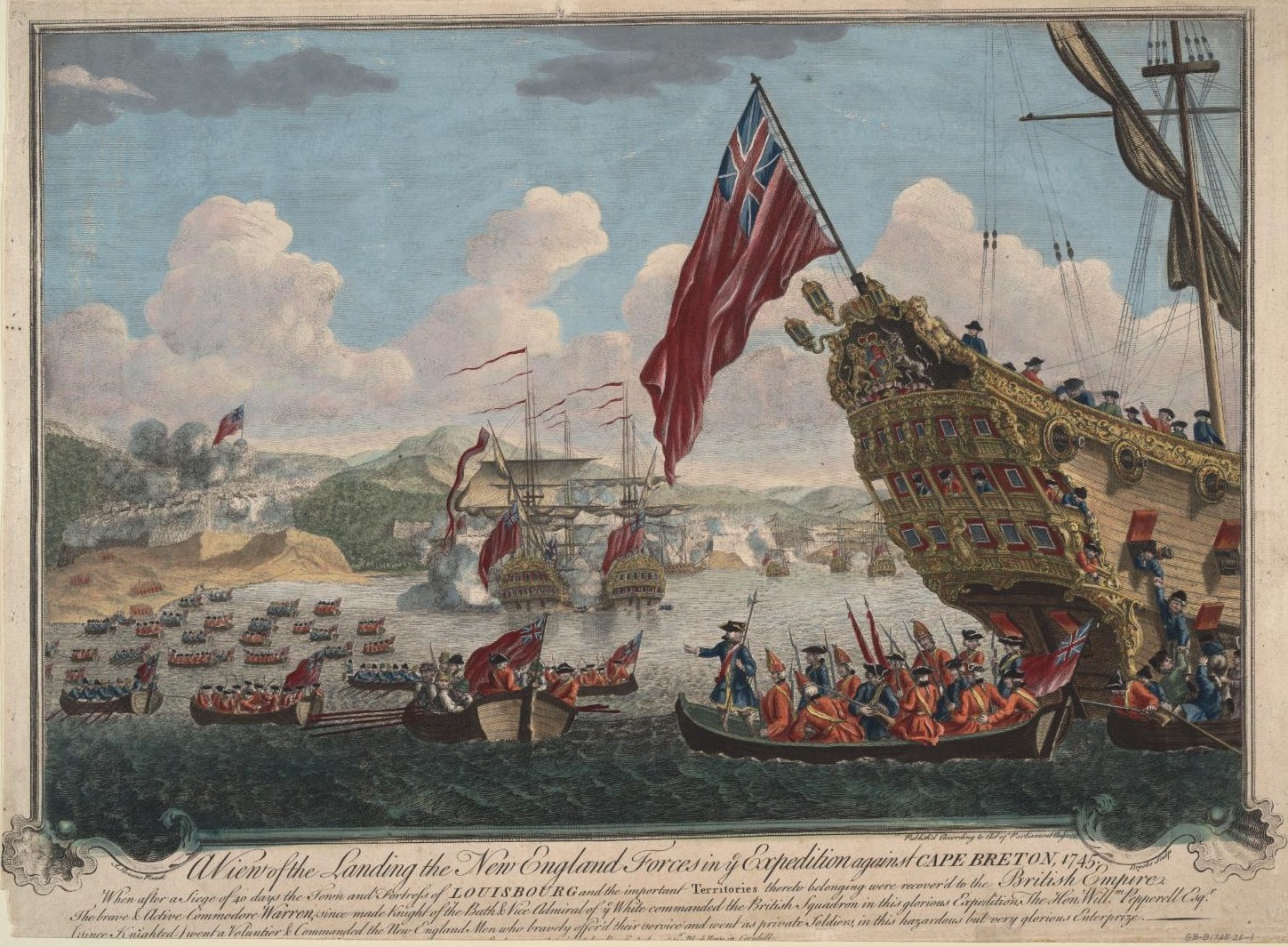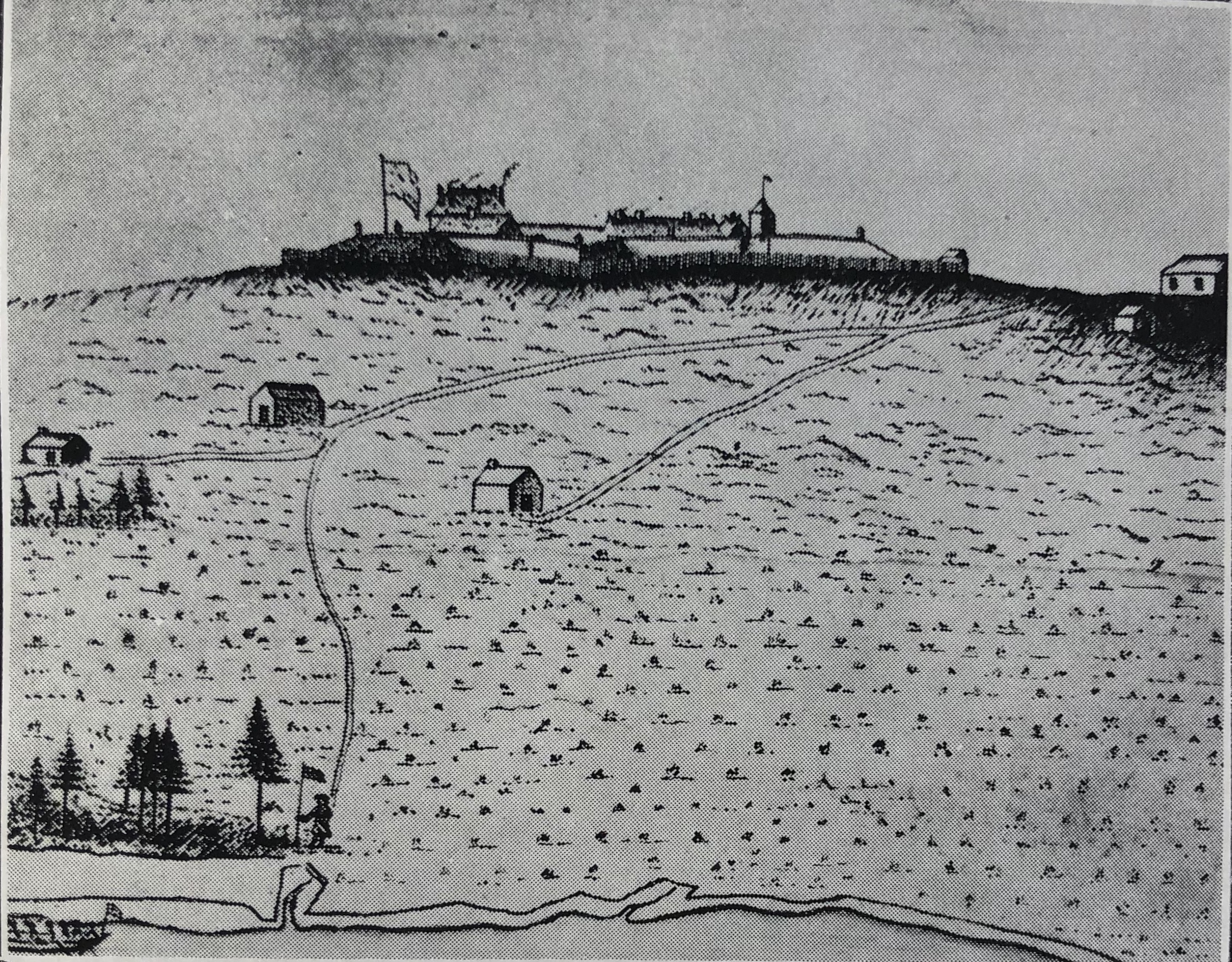|
Jotham Gay
Jotham Gay (April 11, 1733 – October 16, 1802) was an army officer, who served at Fort Edward (Nova Scotia), and political figure in Nova Scotia. He represented Cumberland County in the Legislative Assembly of Nova Scotia from 1772 to 1774. The son of the Reverend Ebenezer Gay and Jerusha Bradford, he was probably born in Hingham, Massachusetts. Gay received a land grant in Cumberland County in 1761. He was a colonel in the continental army, serving at Louisbourg and at Fort Beauséjour. He was elected to the assembly in a 1772 by-election held after Joshua Winslow was unseated for non-attendance. Gay later moved to Westmorland County, New Brunswick, then returned to Hingham where he died at the age of 69. His brother Martin Martin may refer to: Places Antarctica * Martin Peninsula, Marie Byrd Land * Port Martin, Adelie Land * Point Martin, South Orkney Islands Europe * Martin, Croatia, a village * Martin, Slovakia, a city * Martín del Río, Aragón, Spain * M ... als ... [...More Info...] [...Related Items...] OR: [Wikipedia] [Google] [Baidu] |
Fort Edward (Nova Scotia)
Fort Edward is a National Historic Site of Canada in Windsor, Nova Scotia, (formerly known as Pisiguit) and was built during Father Le Loutre's War (1749-1755). The British built the fort to help prevent the Acadian Exodus from the region. The Fort is most famous for the role it played both in the Expulsion of the Acadians (1755) and in protecting Halifax, Nova Scotia from a land assault in the American Revolution. While much of Fort Edward has been destroyed, including the officers' quarters (which burned down in 1922) and barracks, the blockhouse that remains is the oldest extant in North America. A cairn was later added to the site. Father Le Loutre's War Despite the British Conquest of Acadia in 1710, Nova Scotia remained primarily occupied by ethnic French Catholic Acadians and Mi'kmaq. Father Le Loutre's War began when Edward Cornwallis arrived with 13 transports on 21 June 1749 to establish Halifax. To guard against Mi'kmaq, Acadian, and French attacks on the new Bri ... [...More Info...] [...Related Items...] OR: [Wikipedia] [Google] [Baidu] |
Nova Scotia
Nova Scotia is a Provinces and territories of Canada, province of Canada, located on its east coast. It is one of the three Maritime Canada, Maritime provinces and Population of Canada by province and territory, most populous province in Atlantic Canada, with an estimated population of over 1 million as of 2024; it is also the second-most densely populated province in Canada, and second-smallest province by area. The province comprises the Nova Scotia peninsula and Cape Breton Island, as well as 3,800 other coastal islands. The province is connected to the rest of Canada by the Isthmus of Chignecto, on which the province's land border with New Brunswick is located. Nova Scotia's Capital city, capital and largest municipality is Halifax, Nova Scotia, Halifax, which is home to over 45% of the province's population as of the 2021 Canadian census, 2021 census. Halifax is the List of census metropolitan areas and agglomerations in Canada, twelfth-largest census metropolitan area in ... [...More Info...] [...Related Items...] OR: [Wikipedia] [Google] [Baidu] |
Legislative Assembly Of Nova Scotia
The Nova Scotia House of Assembly (; ), or Legislative Assembly, is the deliberative assembly of the General Assembly of Nova Scotia, and together with the lieutenant governor of Nova Scotia makes up the Nova Scotia Legislature. The assembly is the oldest in Canada, having first sat in 1758; in 1848, it was the site of the first responsible government in the British Empire. Bills passed by the House of Assembly are given royal assent by the lieutenant governor in the name of the King of Canada. Originally (in 1758), the Legislature consisted of the Crown represented by a governor (later a lieutenant governor), the appointed Nova Scotia Council holding both executive and legislative duties and an elected House of Assembly (lower chamber). In 1838, the council was replaced by an executive council with the executive function and a legislative council with the legislative functions based on the House of Lords. In 1928, the Legislative Council was abolished and the members pension ... [...More Info...] [...Related Items...] OR: [Wikipedia] [Google] [Baidu] |
Hingham, Massachusetts
Hingham ( ) is a town in northern Plymouth County, Massachusetts, Plymouth County in the U.S. state of Massachusetts. Part of the Greater Boston region, it is located on the South Shore (Massachusetts), South Shore of Massachusetts. At the 2020 United States census, 2020 census, the population was 24,284. Hingham is known for its colonial history and location on Boston Harbor. The town was named after Hingham, Norfolk, England, and was first settled by English colonists in 1633. History The town of Hingham was dubbed "Bare Cove" by the first colonizing English in 1633, but two years later was incorporated as a town under the name "Hingham." The land on which Hingham was settled was deeded to the English by the Wampanoag sachem Wompatuck in 1655. The town was within Suffolk County, Massachusetts, Suffolk County from its founding in 1643 until 1803, and Plymouth County, Massachusetts, Plymouth County from 1803 to the present. The eastern part of the town split off to become ... [...More Info...] [...Related Items...] OR: [Wikipedia] [Google] [Baidu] |
Cumberland County, Nova Scotia
Cumberland County is a county in the Canadian province of Nova Scotia. Cumberland was named in 1755 in honour of the Duke of Cumberland to replace Beausejour. The historic county was founded in 1759 when the English system of administration was installed to complement settlement during the Charles Lawrence governorship, and was later divided at the partitioning of the province and in 1840. The area thrived in the 19th century with the development of lumbering, shipbuilding, and coal mining, but rural outmigration and deforestation led to some communities being abandoned in the 20th century. The county spans an area of 4,271.23 km2 making it Nova Scotia's second largest county, with resources including extensive forest land, several mineral resources, and agricultural areas that concentrate on wild blueberry harvesting. As of the 2021 census, Cumberland County had a population of 30,538, with the majority residing in the Municipality of the County of Cumberland. The county in ... [...More Info...] [...Related Items...] OR: [Wikipedia] [Google] [Baidu] |
Fortress Of Louisbourg
The Fortress of Louisbourg () is a tourist attraction as a National Historic Sites of Canada, National Historic Site and the location of a one-quarter partial reconstruction of an 18th-century Kingdom of France, French fortress at Louisbourg, Nova Scotia, Louisbourg on Cape Breton Island, Nova Scotia. Its two sieges, especially that of 1758, were turning points in the Anglo-French struggle for what today is Canada. The original settlement was founded in 1713 by settlers from Terre-Neuve (New France), Terre-Neuve, and initially called Havre à l'Anglois. Subsequently, the fishing port grew to become a major commercial port and a strongly defended fortress. The fortifications eventually surrounded the town. The walls were constructed mainly between 1720 and 1740. By the mid-1740s Louisbourg, named for Louis XIV of France, was one of the most extensive (and expensive) European fortifications constructed in North America. The site was supported by two smaller garrisons on Île Royale ... [...More Info...] [...Related Items...] OR: [Wikipedia] [Google] [Baidu] |
Fort Beauséjour
Fort Beauséjour (), renamed Fort Cumberland in 1755, is a large, five-bastioned fort on the Isthmus of Chignecto in eastern Canada, a neck of land connecting the present-day province of New Brunswick with that of Nova Scotia. The site was strategically important in Acadia, a French colony that included primarily the Maritimes, the eastern part of Quebec, and northern Maine of the later United States. The fort was built by the French from 1751 to 1752. They surrendered it to the British in 1755 after their defeat in the Battle of Fort Beauséjour, during the Seven Years' War. The British renamed the structure as Fort Cumberland. The fort was strategically important throughout the Anglo-French rivalry of 1749–63, known as the French and Indian Wars by British colonists. Less than a generation later, it was the site of the 1776 Battle of Fort Cumberland, when the British forces repulsed sympathisers of the American Revolution. Since 1920 the site has been designated as a National ... [...More Info...] [...Related Items...] OR: [Wikipedia] [Google] [Baidu] |
Joshua Winslow
Joshua Winslow (January 23, 1726 – June 1801) was an American-born military officer, judge and political figure in Nova Scotia, Canada. He represented Cumberland County in the Nova Scotia House of Assembly from 1770 to 1772. He was the father of Anna Green Winslow. He was born in Portsmouth, New Hampshire, the son of John Winslow and Sarah Peirce. Winslow was a lieutenant in William Pepperrell's regiment which attacked Louisbourg in 1745. After the fall of Louisbourg, he was named commissary general for British troops in Nova Scotia. During Father Le Loutre's War, he fought in the Battle at Chignecto. In 1758, he married his cousin Anna Green. With others, he petitioned for representative government in Nova Scotia. Winslow was justice of the peace and a lieutenant in the militia. In 1764, he was named a judge in the Inferior Court of Common Pleas. Winslow had considered returning to a residence in Massachusetts but decided to remain in Nova Scotia once the American Rev ... [...More Info...] [...Related Items...] OR: [Wikipedia] [Google] [Baidu] |
Westmorland County, New Brunswick
Westmorland County (2021 population: 163,576) is a county in New Brunswick, a province of Canada. It is in the south-eastern part of the province. It contains the fast-growing commercial centre of Moncton and its northern and eastern suburbs. Also located in the county are the university town of Sackville and the local tourist destination of Shediac. Westmorland County is centrally located in the Maritimes and is New Brunswick's most populous county. Fishing and tourism are important industries along the Northumberland Strait shore, and there is some mixed farming in the Petitcodiac River Valley and in the Tantramar Marsh region. The city of Moncton accounts for half of the county's population and has developed as a major transportation, distribution, commercial and retail centre. Dorchester is the historic shire town. Origins The county, once a part of Cumberland County, Nova Scotia, was one of the original eight counties delineated shortly after the creation of the B ... [...More Info...] [...Related Items...] OR: [Wikipedia] [Google] [Baidu] |
Martin Gay
Martin Gay (December 29, 1726 – February 3, 1809) was a metal smith and political figure in Nova Scotia. He represented Cumberland Township in the Legislative Assembly of Nova Scotia from 1783 to 1785. He was born in Hingham, Massachusetts, the son of the Reverend Ebenezer Gay and Jerusha Bradford. Gay was married twice: first to Mary Pinckey in 1750 and then to Ruth Atkins in 1765. Gay went to Halifax in 1776 when the loyalists left Boston. He served as a justice in the Inferior Court of Common Pleas for Cumberland County. He was elected to the assembly in a 1783 by-election held after Hezekiah King's seat was declared vacant for non-attendance. Gay travelled to England in 1788 and then returned to Boston in 1792. He died there at the age of 82. His letters were published in 1898. His brother Jotham also served in the assembly. His son Samuel Samuel is a figure who, in the narratives of the Hebrew Bible, plays a key role in the transition from the biblical judges t ... [...More Info...] [...Related Items...] OR: [Wikipedia] [Google] [Baidu] |
1733 Births
Events January–March * January 13 – Borommarachathirat V becomes King of Siam (now Thailand) upon the death of King Sanphet IX. * January 27 – George Frideric Handel's classic opera, ''Orlando'' is performed for the first time, making its debut at the King's Theatre in London. * February 12 – British colonist James Oglethorpe founds Savannah, Georgia. * March 21 – The Molasses Act is passed by British House of Commons, which reinforces the negative opinions of the British by American colonists. The Act then goes to the House of Lords, which consents to it on May 4 and it receives royal assent on May 17. * March 25 – English replaces Latin and Law French as the official language of English and Scottish courts following the enforcement of the Proceedings in Courts of Justice Act 1730. April–June * April 6 **After British Prime Minister Robert Walpole's proposed excise tax bill results in rioting over the imposition of a ... [...More Info...] [...Related Items...] OR: [Wikipedia] [Google] [Baidu] |
1802 Deaths
Events January–March * January 5 – Thomas Bruce, 7th Earl of Elgin, British ambassador to the Ottoman Empire, begins removal of the Elgin Marbles from the Parthenon in Athens, claiming they are at risk of destruction during the Ottoman occupation of Greece; the first shipment departs Piraeus on board Elgin's ship, the ''Mentor'', "with many boxes of moulds and sculptures", including three marble torsos from the Parthenon. * January 15 – Canonsburg Academy (modern-day Washington & Jefferson College) is chartered by the Pennsylvania General Assembly. * January 29 – The French Saint-Domingue expedition (40,000 troops) led by General Charles Leclerc (Bonaparte's brother-in-law) lands in Saint-Domingue (modern Haiti) in an attempt to restore colonial rule following the Haitian Revolution in which Toussaint Louverture (a black former slave) has proclaimed himself Governor-General for Life and established control over Hispaniola. * February 3 – Leclerc and the fir ... [...More Info...] [...Related Items...] OR: [Wikipedia] [Google] [Baidu] |







